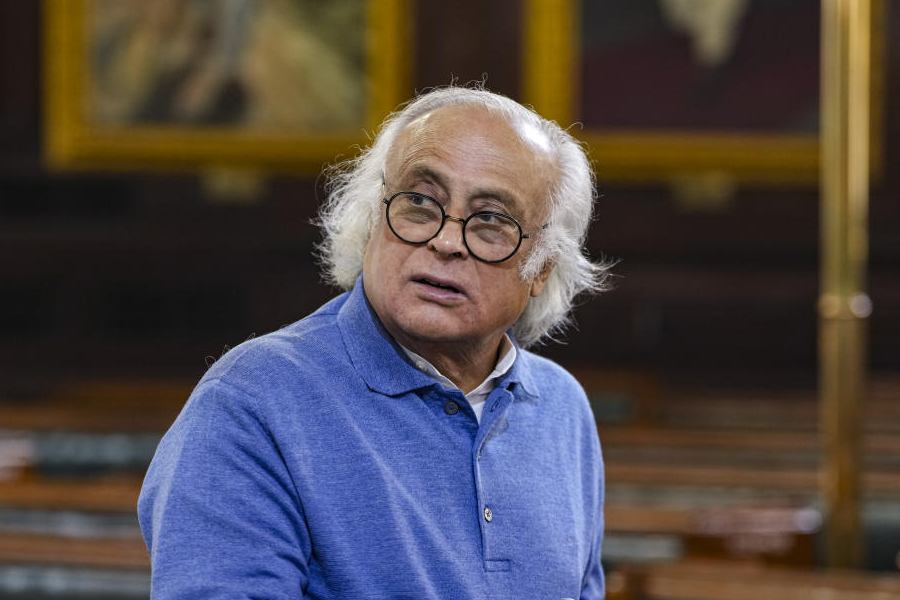A report in The Telegraph of August 10 reflects a curious situation on India’s labour front. Just when things seemed to be looking up, penniless migrant workers, home after harrowing months of lockdown, are refusing to return to work in the states they fled. They are offered tempting packages, with undreamt-of perks like air-conditioned travel or even flights; yet they would rather stay at home on subsistence wages under the rural employment guarantee scheme that actually offers no ‘guarantee’.
Of course this is not the case everywhere: streams of workers are making their way back. What is striking is that so many people, in state after state, should demur. The ‘head-hunters’ (was the term ever used for such lowly workers?) find the situation ‘unimaginable’. The humble labourers have taught our corporate arbiters something.
It is important that they draw the right lessons. ‘These people’ are not feckless laggards who won’t stir from home. On the contrary, they have always done so: at their modest level, they were upwardly mobile. The surreal reality of the lockdown has made them rethink their situation: poised on the edge of subsistence, with neither State nor employer reaching out a hand. Hence they feel their only course is to bunker down at home.
This should surprise nobody. India’s owning classes have consistently abandoned the poor on the assumption, as classically expressed, that ‘those people’ are not like ‘us’: they don’t need resources, lucky them — they’ll always find a way to survive. Sure enough, they are resorting to that bedrock resilience, of spirit more than substance — assuming on their part, reasonably enough, that the fortunate classes do have resources, that they can work out their survival by themselves.
Our economic order, it seems, is at its core no better than a sullen meeting of these adversaries. Covid-19 unhinged a production process held together by human relations as fragile as cobwebs. It thereby exposed that this structure makes bad economic sense.
In hindsight, employers might have found it cheaper to support their workers, even subcontractual and casual workers, through the lockdown. A company lost Rs 2 lakhs on a single bus to carry 35 workers from Bengal to Maharashtra. That sum would have fed 200 workers for the six weeks of total lockdown, or fed and housed a hundred. The workers would not have been pauperized, ravaging the humbler end of the consumer economy, and employers would not now be losing production time. It is worth extending the maths to a total costing over the period. The corporates did contribute handsomely to the PM-Cares fund, sometimes retrenching their own staff to find the money, thereby meeting their CSR target and winning political merit. It did not ensure care for their embattled workforce, and the donors were too polite to ask.
Perhaps our hard-nosed business model is not so hard-nosed after all. Perhaps Tagore was talking good economics when he wrote, ‘He that you pull down, pulls you down below’. The pandemic has revealed how instead of a dispassionate optimal nurturing of resources, including human resources, we have simply been shuffling the external tools of production in a workspace foetid with ancient distrust and alienation.
The curve doesn’t flatten there. The short-changing of India’s proletariat is not restricted to what we conventionally think of as ‘the economy’. It is endemic to certain basic operations of the State that will determine where this country stands in ten years’ time.
In a recent interaction, the prime minister, Narendra Modi, rightly stressed containment and contact-tracing as crucial in combating Covid-19. Throughout India, especially in rural areas, this task is carried out by Accredited Social Health Activist workers. They visit houses, record cases, trace contacts, organize quarantine and hospitalization. In normal times, they manage pregnancies, family planning, child health and immunization, and primary control of ailments like diarrhoea and malaria. They are on duty 24x7. They are the bedrock of India’s public health management.
So what might be their salary? Basically, zero. They receive modest sums per case: each immunization, each hospitalized pregnancy, each family planning procedure, and so on. Some states add a small stipend. The average Asha worker earns Rs 4,000 a month. Payments are notoriously irregular. To compare, a Union government peon might get Rs 30,000.
The genius of the Indian bureaucracy has a rationale for this bizarre imbalance. Ground-level welfare personnel count as volunteers, not employees. The National Literacy Mission is entrusted to volunteers and NGOs. Anganwadi staff, again, are ‘volunteers’ paid Rs 3,000 a month from Central funds, their assistants Rs 1,500, varyingly supplemented by the states and rarely crossing Rs 10,000. Their duties comprise 28 items under five heads, including home visits, record-keeping and surveys, besides actually looking after the children and expectant and nursing mothers.
The National Education Policy has reinvented anganwadis as pre-primary schools, with the staff retrained for the purpose. The Policy notes that 85 per cent of a child’s development takes place by the age of six. The emoluments of those guiding this crucial development may seem uncommensurate. The private sector hardly shows up better. In many schools charging five-figure fees, parents would be shocked to learn how little reaches the junior teachers, and on what terms. Nurses and paramedics fare even worse in high-end private hospitals. There was an exodus from such hospitals in Bengal when the government health service recruited nurses on a large scale. In some places, most prominently Bangalore, nurses in private hospitals felt so disincentivized as to leave their jobs as the pandemic broke.
All this adds up to an unedifying conclusion. India is running not only its industrial and service sectors but also its public health, child welfare and education systems overwhelmingly on the lines of a gig economy, to an extent rare and possibly without parallel. Yet India has little of the social insurance that mitigates the human damage of the gig economy in prosperous post-industrial societies, which usually attained that prosperity through stabler models of employment in the past.
Do we have the money to do better? The blunt answer must be: if we mean business, we must find it by whatever means. We are not always austere in our spending. It would be educative to balance the cost of various welfare measures against that of grand governmental gestures, from Rs 3,000 crore for the Statue of Unity or Rs 20,000 crore as the first tranche for Delhi’s Central Vista, to Rs 1.1 lakh crore for the bullet train (even loans must be repaid) and Rs 1.45 lakh crore as company tax relief last year. The welfare possibilities of those last sums are awesome to contemplate.
Such daydreams are futile, but they reflect a looming reality. Over half of India’s population is below 25. ‘Demographic dividend’ has become a cliché. We can reap that dividend only by investing in education, health and social support in a way precluded by our gut instincts of governance. To this day, we view education and health as things ‘we’ enjoy but ‘they’ need not, as ‘our’ advantage lies in exploiting the gap. Buried deep inside the NEP are discreet provisions for ‘alternative models of education’ with ‘less emphasis on inputs’ (read under-funded schools), even a Plan C for child labourers ‘not able to attend a physical school’.
The problem with this abstemiousness for people other than ourselves is that it will turn the demographic dividend into a demographic market crash. Somewhere around 2030, India will be full of people with limited skills, denizens of an economy with few jobs on offer, and a level of health and well-being that leaves no-one immune. In fact, we are blest with a preview: it will be a countryscape not unlike today’s. But there will be no virus to blame, only ourselves.
The author is Professor Emeritus, Jadavpur University










